Impact of Capture Effect on LTE-Licensed Assisted Access Networks
-
摘要: LTE授权辅助接入(LAA)和WiFi网络的共存性能已经被广泛研究。然而,这些工作忽略了捕获效应,即当两个以上的信号在相同信道上同时传输时,最强的信号仍然可能成功接收。这种现象在共存场景中可能比在WiFi网络中更频繁地发生。基于此,该文深入研究了LAA和WiFi网络在捕获效应下的共存性能。具体地,在共存场景中首先提出了两个以上信号的捕获模型,并推导出了捕获概率;然后,将LAA接入方案建模为具有捕获效应的新的2维离散马尔可夫模型,其中退避计数器的减少不仅取决于空闲的时隙,还取决于捕获效应发生的时隙;最后推导出共存性能的表达式。大量的仿真和数值结果验证了所提出的马尔可夫链和捕获模型的有效性。而且,仿真结果也证明了考虑捕获效应的必要性。
-
关键词:
- 网络共存 /
- LTE-授权辅助接入 /
- WiFi网络 /
- 捕获效应 /
- 马尔可夫链
Abstract: The coexistence performance of LTE-licensed Assisted Access (LAA) and WiFi networks has been extensively investigated. However, these works ignore capture effect, which is the phenomenon that the strongest signal may still be successfully received when more than two signals are transmitted simultaneously on the same channel, and which may occur more frequently in the coexistence scenario than in the pure WiFi network. Therefore, in this paper, the coexistence performance of LAA and WiFi networks with the capture effect is deeply investigated. More specifically, a capture model for more than two signals is firstly proposed in the coexistence scenario, and the capture probability is derived. Then the LAA access scheme is modeled as a new two-dimensional discrete Markov model with the capture effect, where the decrease of the backoff counter depends not only on the idle time slots but also on the time slots in which capture effect occurs. Finally, the expressions for coexistence performance are derived. A large number of simulation and numerical results verify the validity of the proposed Markov chain and capture model. The results prove the necessity of considering the capture effect in coexistence performance evaluation. -
表 1 仿真参数
参数 取值 参数 取值 参数 取值 参数 取值 MAC首部 192 bit 传播延时${T_{{\rm{def}}} }$ 1 μs DIFS/SIFS 34/16 μs 频率 5.15 GHz PHY首部 224 bit 最大重传次数$h$ 15 ICCA持续时隙$L$ 8时隙 传输功率 23 dBm ACK 112 bit 时隙大小σ 9 μs ECCA延迟长度${T_d}$ 4时隙 覆盖半径$R$ 50 m 数据包负载 8192 bit 免授权频段带宽 20 MHz LAA/WiFi数据速率 120 Mbit/s/70 Mbit/s 免授权频段的数量 2 -
[1] International Telecommunication Union Radio Communication Sector (ITU-R). IMT traffic estimates for the years 2020 to 2030[R]. ITU-R M. 2370-0, 2015. [2] SATHYA V, ROCHMAN M I, and GHOSH M. Hidden-nodes in coexisting LAA & Wi-Fi: A measurement study of real deployments[C]. 2021 IEEE International Conference on Communications Workshops (ICC Workshops), Montreal, Canada, 2021: 1–7. [3] SAHA R K. Coexistence of cellular and IEEE 802.11 technologies in unlicensed spectrum bands-a survey[J]. IEEE Open Journal of the Communications Society, 2021, 2: 1996–2028. doi: 10.1109/OJCOMS.2021.3106502 [4] PEI Errong, LU Xun, DENG Bingguang, et al. The impact of imperfect spectrum sensing on the performance of LTE licensed assisted access scheme[J]. IEEE Transactions on Communications, 2020, 68(3): 1966–1978. doi: 10.1109/TCOMM.2019.2963153 [5] GREY Z J, MOSLEH S, REZAC J D, et al. Optimizing unlicensed band spectrum sharing with subspace-based Pareto tracing[C]. 2021 IEEE International Conference on Communications, Montreal, Canada, 2021: 1–7. [6] PEI Errong, ZHOU Lineng, DENG Bingguang, et al. A Q-Learning based energy threshold optimization algorithm in LAA networks[J]. IEEE Transactions on Vehicular Technology, 2021, 70(7): 7037–7049. doi: 10.1109/TVT.2021.3080832 [7] REN Qilei, ZHENG Jun, XIAO Jie, et al. Performance analysis of an LAA and WiFi coexistence system using the LAA category-4 LBT procedure with GAP[J]. IEEE Transactions on Vehicular Technology, 2021, 70(8): 8007–8018. doi: 10.1109/TVT.2021.3089607 [8] GARCIA-SAAVEDRA A, PATRAS P, VALLS V, et al. ORLA/OLAA: Orthogonal coexistence of LAA and WiFi in unlicensed spectrum[J]. IEEE/ACM Transactions on Networking, 2018, 26(6): 2665–2678. doi: 10.1109/TNET.2018.2876590 [9] SALEEM R, ALVI S A, and DURRANI S. Performance-fairness trade-off for Wi-Fi and LTE-LAA coexistence[J]. IEEE Access, 2021, 9: 62446–62459. doi: 10.1109/ACCESS.2021.3075252 [10] LIU Zhiyuan and XU Xiaodong. System throughput performances analyses with stochastic geometry in unlicensed spectrum systems[C]. The 3rd International Conference on Advances in Computer Technology, Information Science and Communication (CTISC), Shanghai, China, 2021: 47–52. [11] WANG Xijun, QUEK T Q S, SHENG Min, et al. Throughput and fairness analysis of Wi-Fi and LTE-U in unlicensed band[J]. IEEE Journal on Selected Areas in Communications, 2017, 35(1): 63–78. doi: 10.1109/JSAC.2016.2632629 [12] LI Yingzhe, BACCELLI F, ANDREWS J G, et al. Modeling and analyzing the coexistence of Wi-Fi and LTE in unlicensed spectrum[J]. IEEE Transactions on Wireless Communications, 2016, 15(9): 6310–6326. doi: 10.1109/TWC.2016.2582866 [13] PEI Errong and JIANG Junjie. Performance analysis of licensed-assisted access to unlicensed spectrum in LTE release 13[J]. IEEE Transactions on Vehicular Technology, 2019, 68(2): 1446–1458. doi: 10.1109/TVT.2018.2886332 [14] LEE H, KIM H, YANG H J, et al. Performance analysis of license assisted access LTE with asymmetric hidden terminals[J]. IEEE Transactions on Mobile Computing, 2018, 17(9): 2141–2154. doi: 10.1109/TMC.2018.2793230 [15] UDDIN F. Capture effect on downlink throughput of a CSMA based WLAN[C]. The 11th International Conference on Signal Processing and Communication Systems (ICSPCS), Surfers Paradise, Australia, 2017: 1–6. [16] WANG Lichun, CHEN A, and HUANG S Y. A cross-layer investigation for the throughput performance of CSMA/CA-based WLANs with directional antennas and capture effect[J]. IEEE Transactions on Vehicular Technology, 2007, 56(5): 2756–2766. doi: 10.1109/TVT.2007.900392 [17] DANESHGARAN F, LADDOMADA M, MESITI F, et al. Unsaturated throughput analysis of IEEE 802.11 in presence of non ideal transmission channel and capture effects[J]. IEEE Transactions on Wireless Communications, 2008, 7(4): 1276–1286. doi: 10.1109/TWC.2008.060859 [18] KUMAR P and KRISHNAN A. Throughput analysis of the IEEE 802.11 distributed coordination function considering erroneous channel and capture effects[J]. International Journal of Automation and Computing, 2011, 8(2): 236–243. doi: 10.1007/s11633-011-0578-0 [19] WANG Wei, XU Pingping, ZHANG Yuan, et al. Performance analysis of AUL FeLAA and WiFi coexistence in the presence of Rayleigh fading channel and capture effect under unsaturated traffic conditions[J]. Science China Information Sciences, 2019, 62(8): 89301. doi: 10.1007/s11432-018-9669-8 [20] GAO Yuan, CHU Xiaoli, and ZHANG Jie. Performance analysis of LAA and WiFi coexistence in unlicensed spectrum based on Markov Chain[C]. 2016 IEEE Global Communications Conference (GLOBECOM), Washington, USA, 2016: 1–6. [21] DANESHGARAN F, LADDOMADA M, MESITI F, et al. Saturation throughput analysis of IEEE 802.11 in the presence of non ideal transmission channel and capture effects[J]. IEEE Transactions on Communications, 2008, 56(7): 1178–1188. doi: 10.1109/TCOMM.2008.060397 [22] EKICI O and YONGACOGLU A. IEEE 802.11a throughput performance with hidden nodes[J]. IEEE Communications Letters, 2008, 12(6): 465–467. doi: 10.1109/LCOMM.2008.080209 [23] BIANCHI G. Performance analysis of the IEEE 802.11 distributed coordination function[J]. IEEE Journal on Selected Areas in Communications, 2000, 18(3): 535–547. doi: 10.1109/49.840210 [24] SATHYA V, ROCHMAN M I, and GHOSH M. Measurement-based coexistence studies of LAA & Wi-Fi deployments in Chicago[J]. IEEE Wireless Communications, 2021, 28(1): 136–143. doi: 10.1109/MWC.001.2000205 [25] SATHYA V, KALA S M, ROCHMAN M I, et al. Standardization advances for cellular and Wi-Fi coexistence in the unlicensed 5 and 6 GHz bands[J]. GetMobile:Mobile Computing and Communications, 2020, 24(1): 5–15. doi: 10.1145/3417084.3417086 -






 下载:
下载:
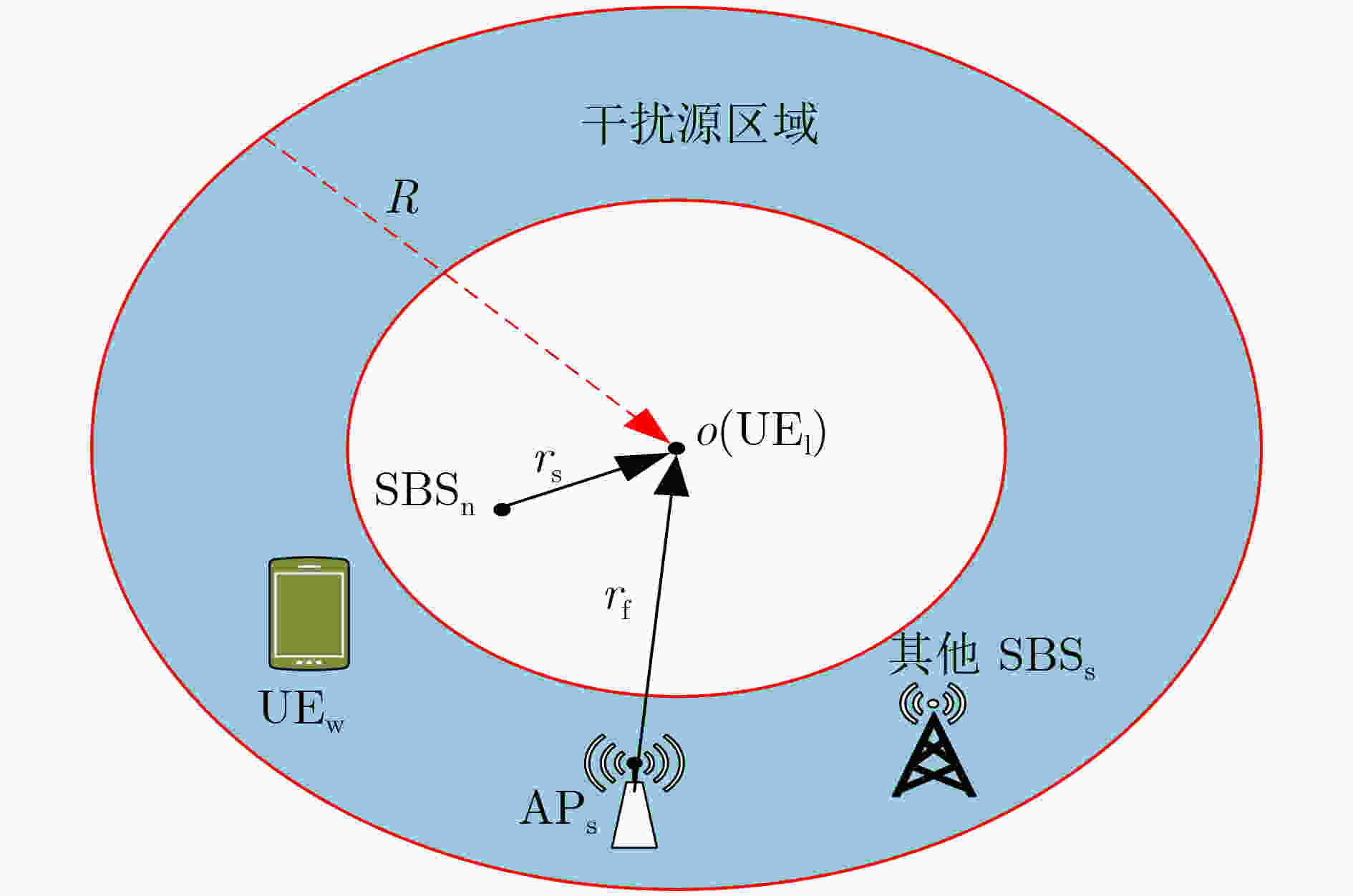
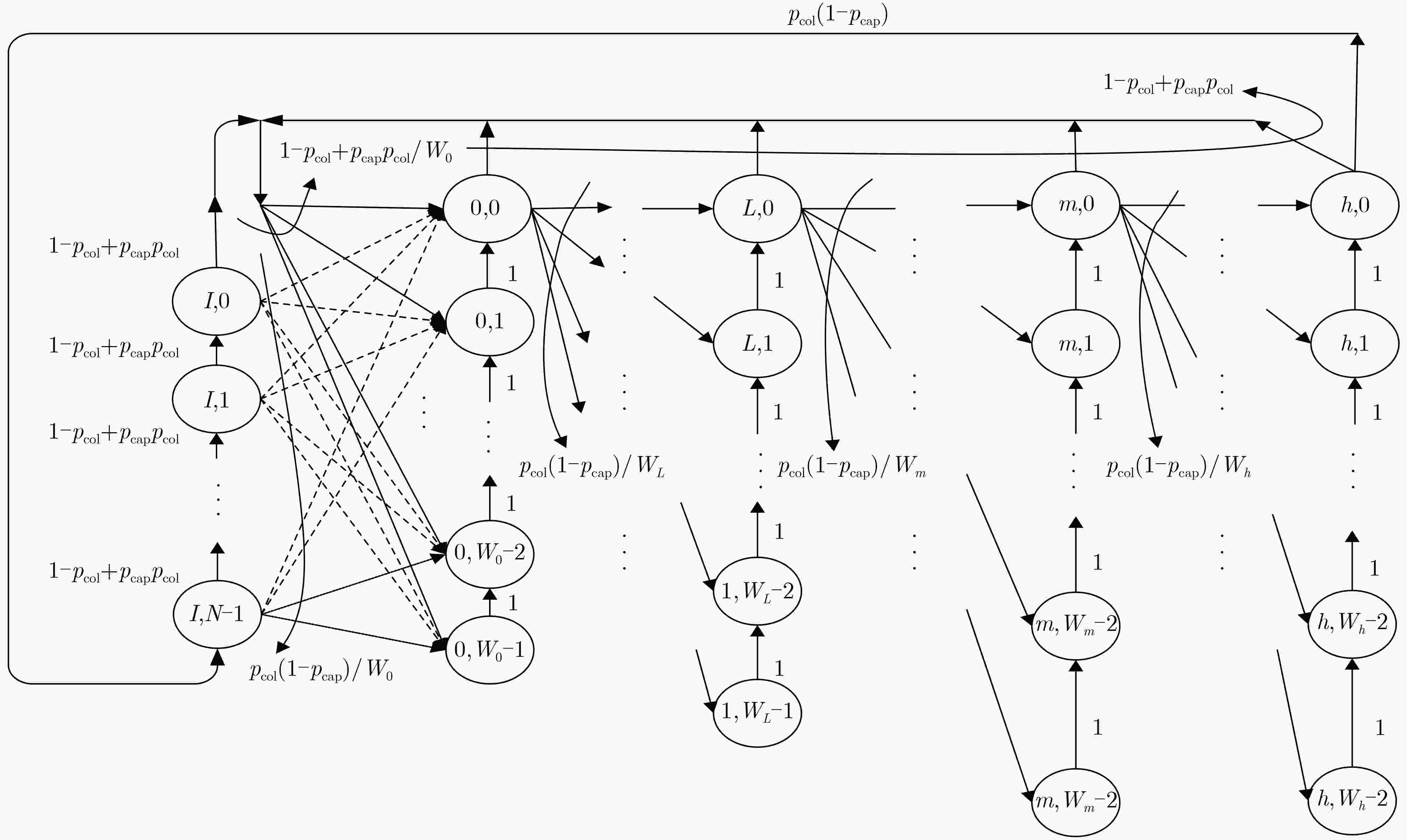
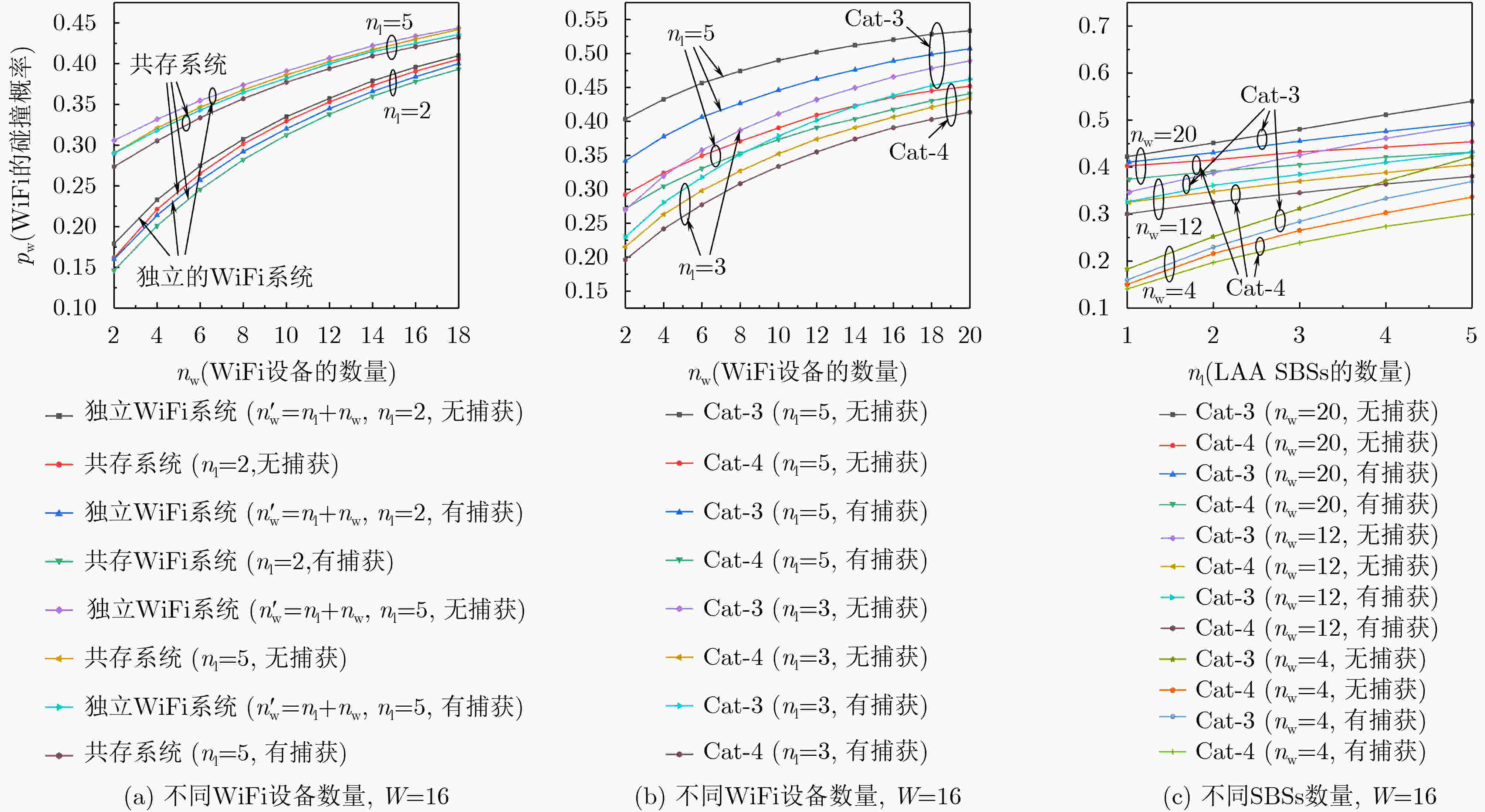
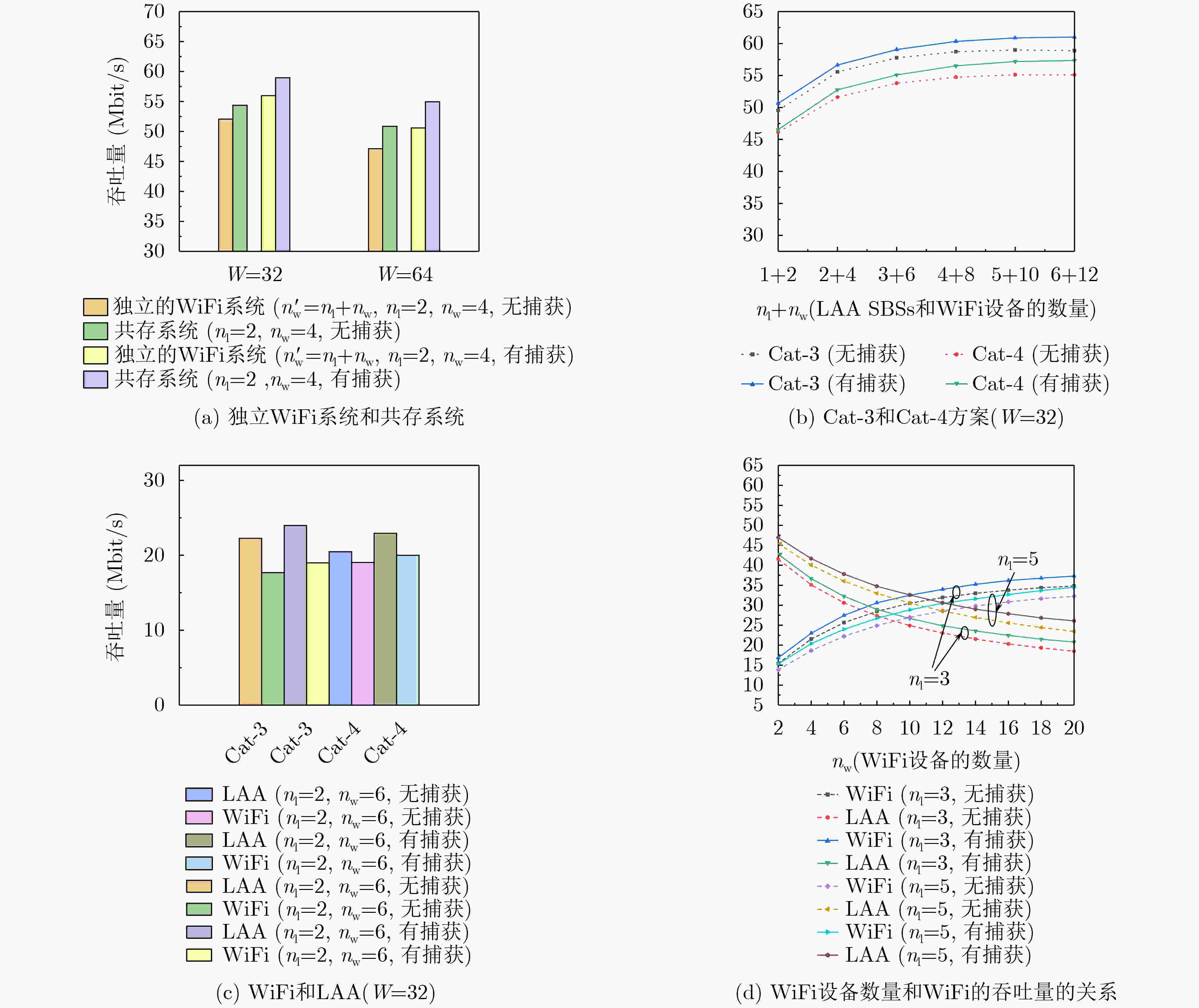

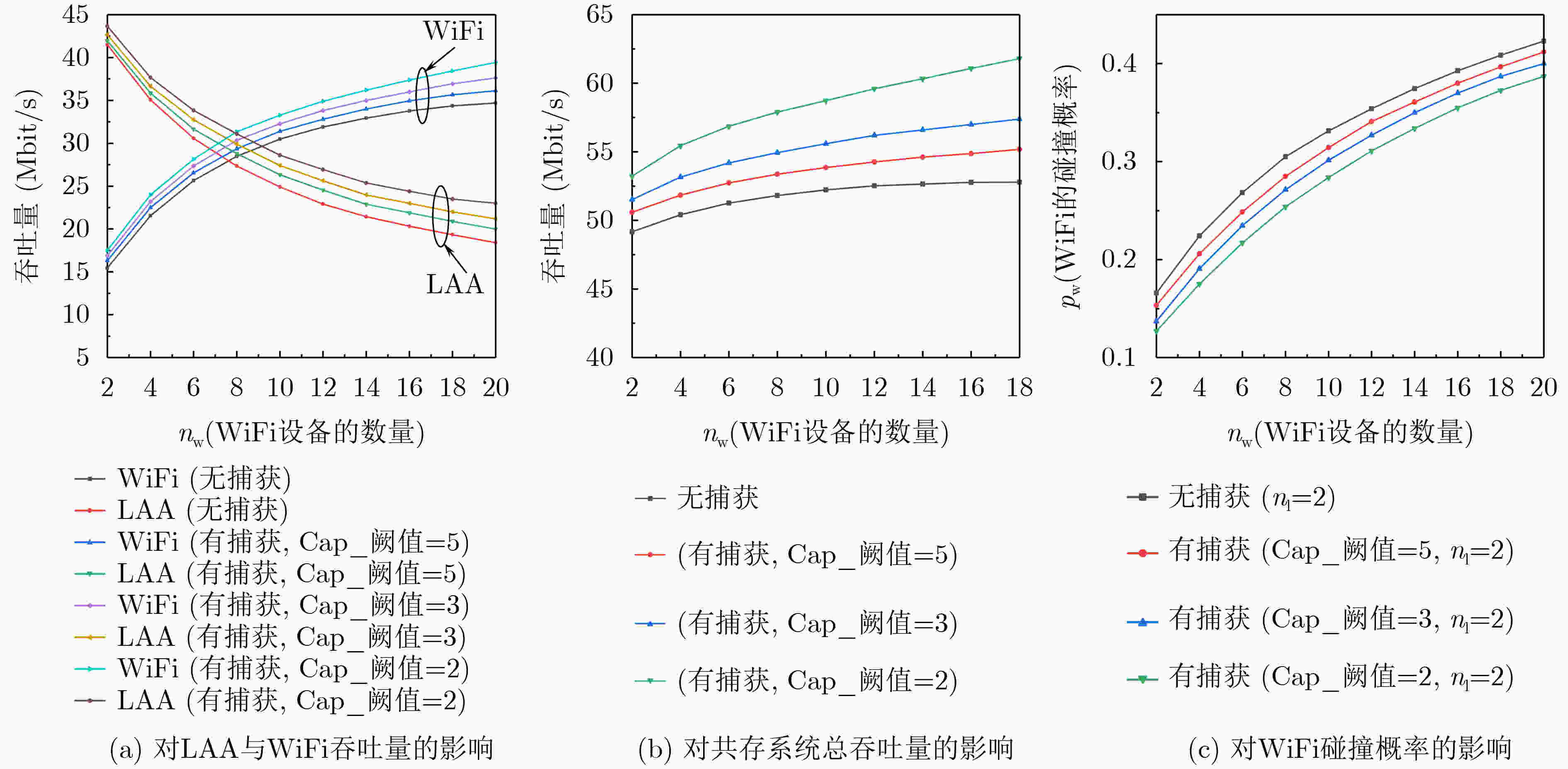


 下载:
下载:
